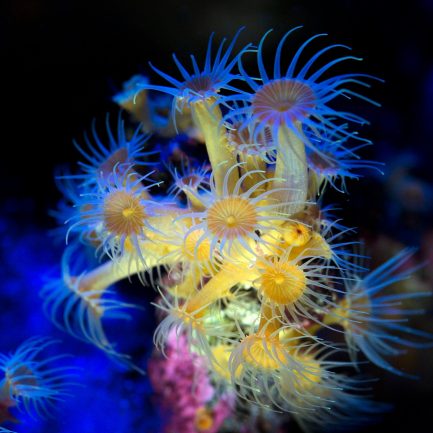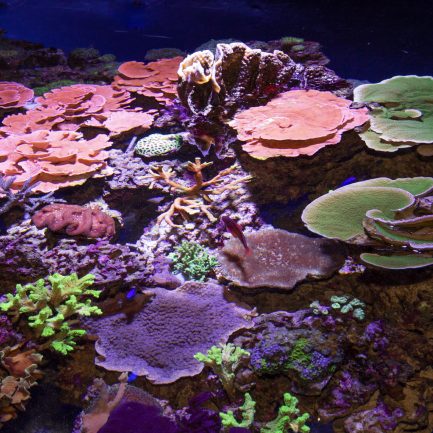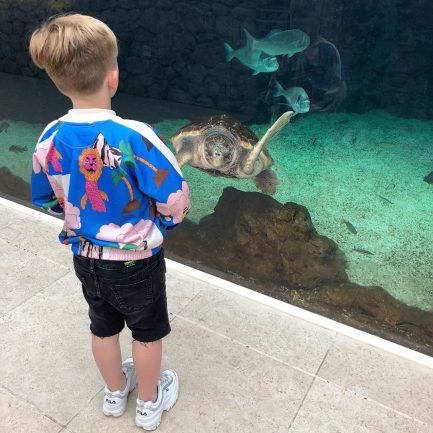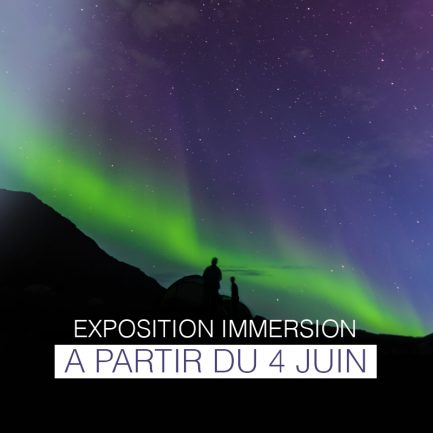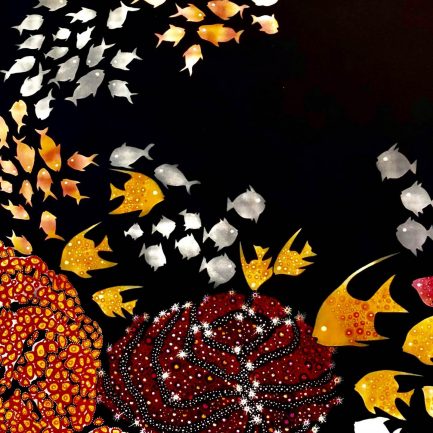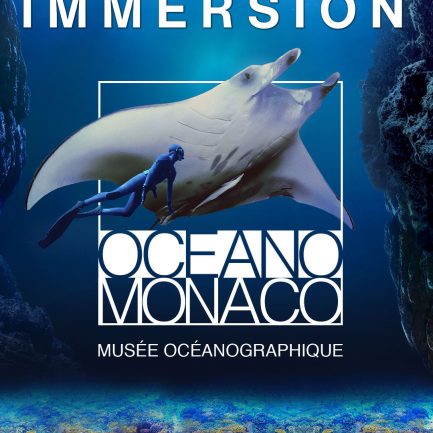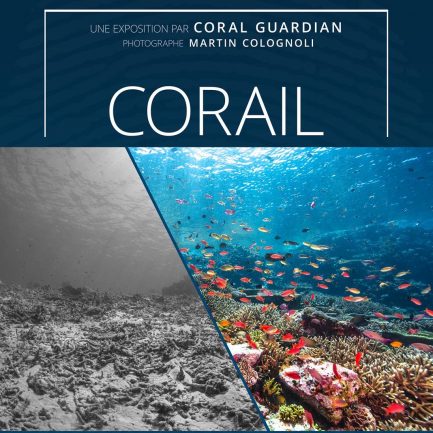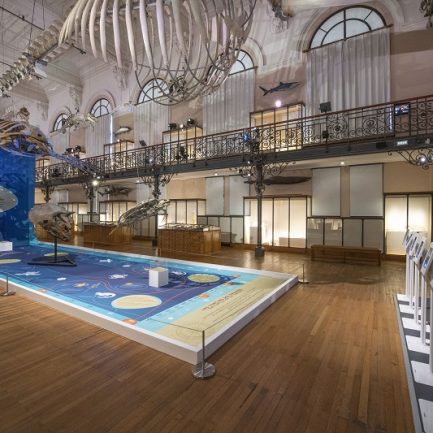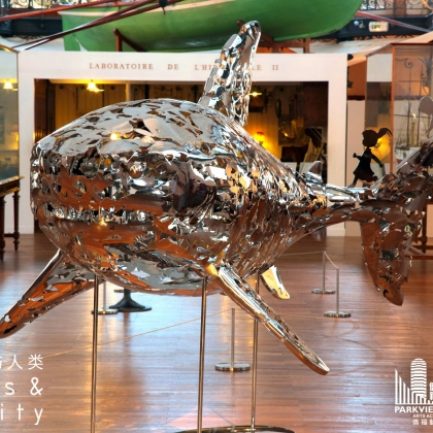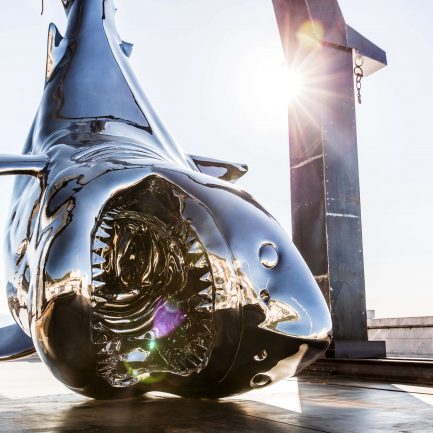- Home
- Actualités
- Polar Mission, the “IMMERSION” exhibition
Please note The IMMERSION room is currently closed and is preparing its next exhibition.
The Polar Mission exhibition ended on 5 January 2025, you can visit the permanent collections on the Museum tour.
The polar worlds in the heart of the Oceanographic Museum
Projection walls 9m high!
a trip in 6 acts
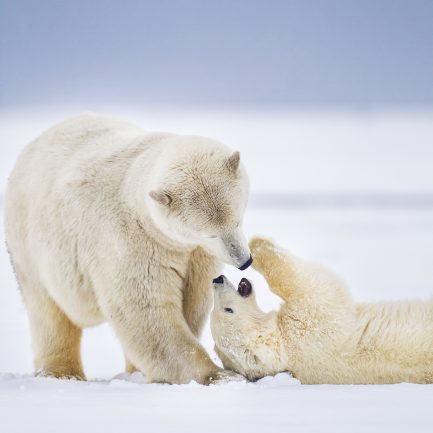
step N°1
MEET
THE BEAR AND HER CUBS
ON THE ICE PACK
This majestic emblem of the Far North, the polar bear, is an endangered species, and the number of individuals has a tendency to decline. There are two main reasons for this: global warming, which is causing its habitat to disappear, and melting ice, which is making its search for food more precarious.
All the more so as its prey, mainly certain species of seal, are vulnerable for the same reasons. These giants, whose lives are closely tied to the pack ice, are gradually moving away from northern regions, sometimes coming dangerously close to villages in search of food.
To illustrate this vulnerability, the polar bears are depicted in a fragile setting. L’effondrement de pans entiers d’icebergs et le craquement constant de la glace sous les pas des visiteurs rappellent la précarité de leur habitat.
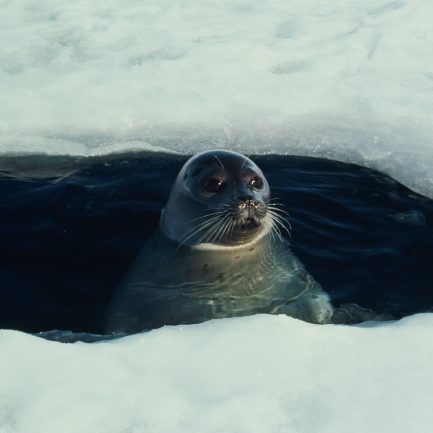
STEP 2
UNDER THE ICE PACK, INTERACTING WITH BELUGAS, SEALS AND NARWHALS
By interacting with these two species, the public is encouraged to feel empathy for these mammals. As they become more aware of their environment, they realize that an entire ecosystem is being altered and, as a result, weakened.
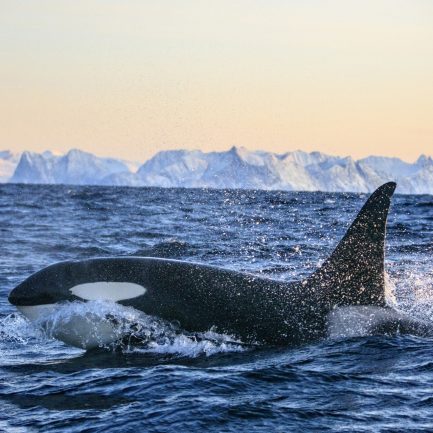
STEP 3
ORCAS JUMP OUT OF THE WATER WHILE ELEPHANT SEALS BASK ON THE SHORES
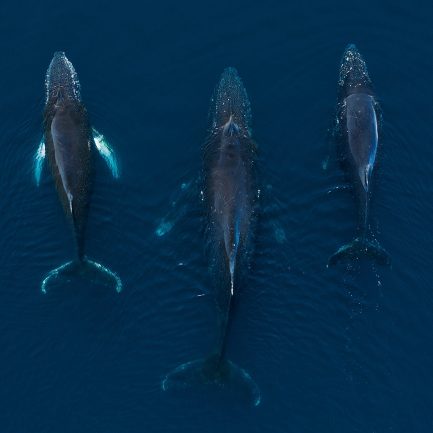
STEP 4
THE
MEAL OF THE
WHALES
Witnessing the gargantuan meals of humpback whales reveals not only their organization and ingenious hunting methods, but also their dependence on this food.
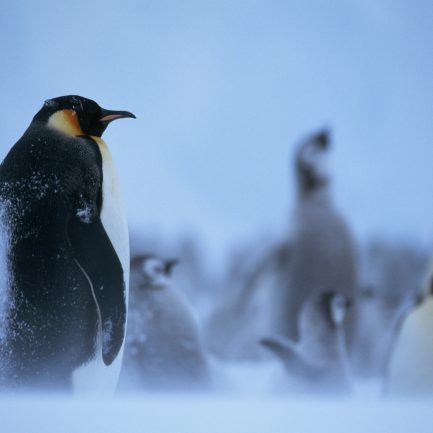
STEP 5
A COLONY OF PENGUINS IN THE BLIZZARD
Enveloped in a blizzard at the center of the penguin colonies, visitors can try to clear the snow to catch a glimpse of the penguins. The public’s perception of the harshness of the climatic conditions will make them aware of their exceptional environment.

STEP 6
THE AURORAS POLAR IN THE STARRY SKY OF THE ANTARCTIC
Technology at the service of knowledge

Contemplate the polar aurora, dive under icebergs to meet seals, belugas and narwhals, attend the meal of the whales, discovering penguins through a blizzard… Or how to push back the limits of reality and offer a unique experience that mobilizes the living. This is what the “IMMERSION” room (stage 4 of the tour) offers, with almost 650m2 of projection space, where thousands of visitors will experience the unique and overwhelming sensation of being at the poles. A journey in which they can interact with the content, the environment and the species.
This experiment, part of the “Mission Polaire” exhibition, was made possible thanks to a virtual replica of the extreme regions, their environment, atmosphere and the species that inhabit them. A complete change of scenery made possible by the use of state-of-the-art technology and a monumental projection system. Computer-generated images offer exceptional scenographic possibilities for cultural and scientific venues, without sacrificing the rigor and exacting standards demanded by a site like the Oceanographic Museum.
One of the aims of this show is to use wonder and emotion to raise visitors’ awareness of the threats facing the poles, their fragility and the risks this poses for the planet as a whole. The aim is to create a link between man and an ecosystem that is generally inaccessible to him, to be spectacular while making sense, to dazzle while raising awareness. The system is also based on a pedagogical approach, enabling the Oceanographic Museum’s animators to take control of the session and guide visitors through an even more knowledgeable experience.

A tool for teaching
The Oceanographic Museum’s educational department offers dedicated activities during the vacation periods and for school groups. A tailor-made visit for young visitors is made possible by a specially designed “teaching mode”. The presenter can freeze certain scenes in the device to better observe a species or comment on its behavior. A multimedia library is also available to the animator, who can project an educational sheet, a film or an anatomical plate at any time to enhance the experience.







